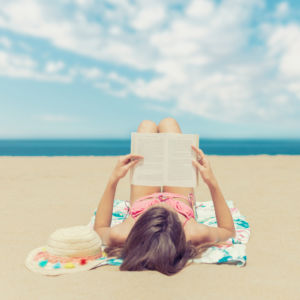Is there an art to relaxation? I need to know because my 2022 new year’s resolution is to stop playing “beat the clock.” If there is an art that I can learn, I will stand a better chance of meeting my resolution. With this in mind, I took my laptop to a comfy sofa, with my dog next to me. A warm, soft light created just the right ambiance.
Google was ready for me. First, I wondered whether I was unique in needing to make a conscious effort to relax. Maybe growing up in a home of six kids and helping our parents manage their corner grocery store while also needing to do well in school had hardwired me to be a “doing machine.”
I discovered through Google that 77 percent of the population experiences stress affecting their physical health, as reported by the American Institute of Stress. I was in good company, though not necessarily the company I wanted to keep. The sites I visited spelled out the downside of living an over-stressed life—high blood pressure, heart disease, lack of sleep, and substance abuse, for starters. They didn’t delve into how we compensate for those stressful moments. For me, ice cream works great—until I get on the scale, which just depending, might induce more stress.
So the obvious question is, how do we place ourselves into a more relaxed state? Many have studied this, but the gold standard appears to be created by Dr. Herbert Benson, originally at Harvard and now at the Benson-Henry Institute for Mind-Body Medicine.
Benson offers a 6-step process toward relaxation that begins with us sitting comfortably (which I am doing as I write this piece), closing our eyes (which I can’t do because I need to see what I am writing), and then relaxing all our muscles from toe to head (and yes, we are to start at our feet). The fourth step in the sequence is to breathe through our nose, being “mindful” or, said another way, “aware” of each breath as we do. As we breathe out, we are to say the word “one” silently to ourselves and repeat this for ten to twenty minutes.
Benson’s recipe made me recall taking yoga classes years ago, which had a similar vibe. At the end of each session, we would lie on our mats, close our eyes, open our palms, and listen to calming beats. We would breathe in and out, through our nose, repeatedly, with “empty” minds.
Except there was always something on my mind. Sometimes I would visualize my to-do list, or I’d suddenly remember needing to call someone back. I would feel a strong urge to exit the studio, except that I couldn’t. There were others like me, and we commiserated about our inability to enjoy the last relaxing minutes of class.
But I am ready for round two. I am older and more aware, so I think I’ll do better. I won’t be lying down on a mat, but I will be comfortably sitting on my sofa as I prepare to release myself from the stress of everyday obligations. I will need to customize Benson’s technique. I can close my eyes and breathe through my nose, but repeating the word “one” won’t do much for me. I will probably substitute “one” with some classical music, like Felix Mendelssohn’s “A Midsummer Night’s Dream” or Beethoven’s “Emperor Concerto.” Classical music has often calmed me during Covid, so why not continue?
The one unaddressed question that still remains is whether I could change my attitude and place fewer things in the bucket of “critically important,” thereby lessening my stress. Google is not helpful here, but fortunately, my bubbie had a saying that makes me laugh and, sort of, works.
When she deemed something irrelevant, my bubbie would say, “Put that in your big toe.” She was from Eastern Europe, and maybe it was a translation from something she heard as a child. It didn’t seem to belong in our culture. There I’d be, visualizing my toe getting bigger, until I realized her point was really about treating something as unimportant and letting it go.
Relaxation is about “letting go,” which is the point of breathing out and creating an environment to help us. I think my customized plan might work and give me a chance to respond to readers who have asked me how one beats the clock.

